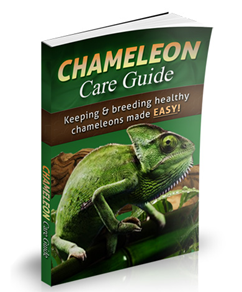Having reptiles as pets is not just about having a unique companion. It’s a commitment, a fascinating journey into understanding another living creature’s requirements, and the responsibility of creating a habitat that mimics their natural environment as closely as possible. Now, while you might think that a glass tank and a heating lamp are enough, there’s a lot more to it. Here are seven steps to ensure your reptilian friend feels right at home.
1. Understand Your Reptile’s Natural Habitat
Before bringing a reptile home, you must understand its natural habitat. This step is crucial for recreating a living environment that will keep them healthy and happy. For instance, chameleons are native to humid and tropical regions, so mimicking that environment is paramount. Speaking of chameleons, if you’re considering getting one or already own one, I’ve stumbled upon a great chameleon care guide that delves deep into their needs and how to cater to them effectively.
2. Choose the Right Enclosure
The size and type of enclosure depend on the reptile species. A small terrarium might work for a gecko, but a snake might need a larger space. Glass aquariums work well as they provide visibility, but ensure there’s a secure lid on top. Also, certain reptiles might need height for climbing, so vertical space can be as critical as horizontal.
3. Provide Proper Heating and Lighting
Reptiles are ectothermic, meaning they depend on external sources to regulate their body temperature. Therefore, having a heat lamp or under-tank heaters can help maintain the required warmth. Additionally, UVB lighting helps reptiles synthesize vitamin D3, essential for calcium absorption.
4. Substrate Matters
The substrate is the bedding or lining you put at the bottom of the enclosure. While sand, gravel, or bark chips can be used, remember to research what’s best for your reptile. For example, newspaper or reptile carpet can be a safer choice as some reptiles might ingest sand, leading to health complications.
5. Create Hideouts and Climbing Spots
Reptiles love hideouts. It gives them a sense of security. Using rocks, logs, or commercially available hides can be beneficial. Climbing structures, like branches, can be a paradise for reptiles like chameleons or geckos.
6. Water and Humidity
A shallow water dish is essential. Reptiles can drink from it, and some might even bathe in it. Additionally, for reptiles from humid climates, daily misting and a humidity meter are necessary. For those interested in how humidity can affect health, especially eye health, this article on choosing the right supplements for eye health can be quite enlightening.
7. Safe Plants and Decor
Live plants not only add aesthetics but also help in maintaining humidity. However, ensure the plants are non-toxic to reptiles. For chameleon owners, here’s a list of 10 decorative plants safe for chameleons to get you started.
Creating the perfect environment for your reptile might sound demanding, but the joy of watching them thrive is unparalleled. Remember, every reptile is different. Continuous research, understanding their behavior, and being observant can go a long way in ensuring they lead a healthy and fulfilling life in captivity.
Benefits of Interacting with Your Reptile
Building a bond with your reptile can be a rewarding experience. While they might not express affection the same way mammals do, regular interaction can foster trust. Handling your reptile gently and frequently can help them get accustomed to human touch and reduce stress during routine checks or clean-ups. Observing your reptile’s behavior is also a way to gauge their health and comfort. If they’re active, eating well, and showing curiosity, it’s a good sign they’re thriving in their environment.
The Importance of Dietary Diversification
Reptiles are diverse creatures, and so are their dietary needs. While some are herbivores, others are carnivores or omnivores. The right diet ensures that your reptile receives all the necessary nutrients for growth and overall health. Freshness is key. For insect-eating reptiles, a variety of insects like crickets, mealworms, and waxworms can provide a balanced diet. Herbivores would benefit from a mix of fresh vegetables, fruits, and reptile-safe plants. Occasional supplements, like calcium or vitamins, can also be beneficial. However, always consult with a veterinarian or a reptile expert to ensure you’re meeting all the nutritional requirements.
Regular Health Checks and Veterinary Visits
Just like other pets, reptiles also require regular health check-ups. While creating a perfect environment drastically reduces the risks of illnesses, it’s not a foolproof guarantee. Early detection of potential issues can make treatment easier and more effective. Look out for signs like lethargy, unusual droppings, or changes in eating habits. Also, finding a vet who specializes in reptiles is crucial. They’ll provide insights into any unique requirements and can guide you on the best practices for reptile care.








